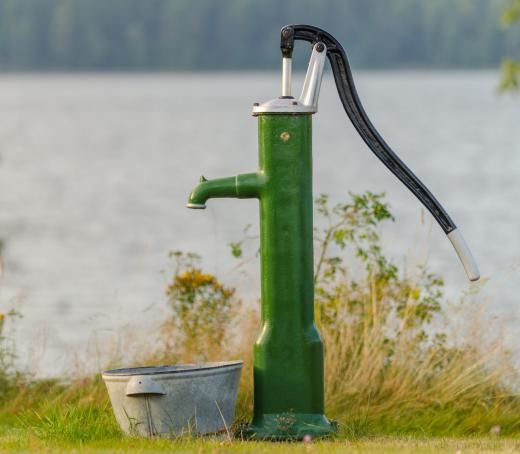A hand lever is a large switch designed to activate or deactivate a system by hand. Hand levers are in a variety of motor vehicles and other large machinery. Levers convert the work done by hand into changing the settings inside the mechanism. Many metal hand levers feature a plastic covered section at their end for easier gripping. Some hand levers require the compression of a release button or a good deal of force to move from one position to another.
Hand lever variations can be found on manual and motorized equipment. A brake hand lever is generally located in the center console between the driver and passenger of many manual and some automatic transmission cars. The brake lever is pulled up to engage the emergency brake and returned to the down position to disengage the brake. Food presses and well water pumps often feature hand levers that must be continuously cranked to operate the system. Built-in tension springs can sometimes make it easier to return a hand lever to the home or off position.

Levers are simple machines unto themselves. Manual force applied to the lever is converted at the fulcrum, or base, of the lever. Converted force from the fulcrum is used to make changes to an internal load, which is often a switch or gear. Internal lubrication may be necessary when a hand lever becomes difficult to reposition. Forcing a hand lever beyond its range may cause it to bend or snap.
Well designed hand levers take into account body position and the average strength of the user. A hand lever is only useful when it can be accessed and pulled. Location, length, and grip comfort of a hand lever make a noticeable difference in its ease of use. Pulling hand levers from an uncomfortable position can put unnecessary strain on a person and the lever. Moving machinery to get a better angle or adding a soft grip to hand levers prevents accidents and injuries.
Adjustable hand levers may allow the user to lock the system into various positions. Hand levers may be the only user input on a piece of large machinery. Each new position the lever moves to changes the operation of the machine. Some hand levers lock into one operation at a time to prevent accidentally switching mid-program. Once the operation is complete, the locked lever is automatically or can be manually unlocked.
